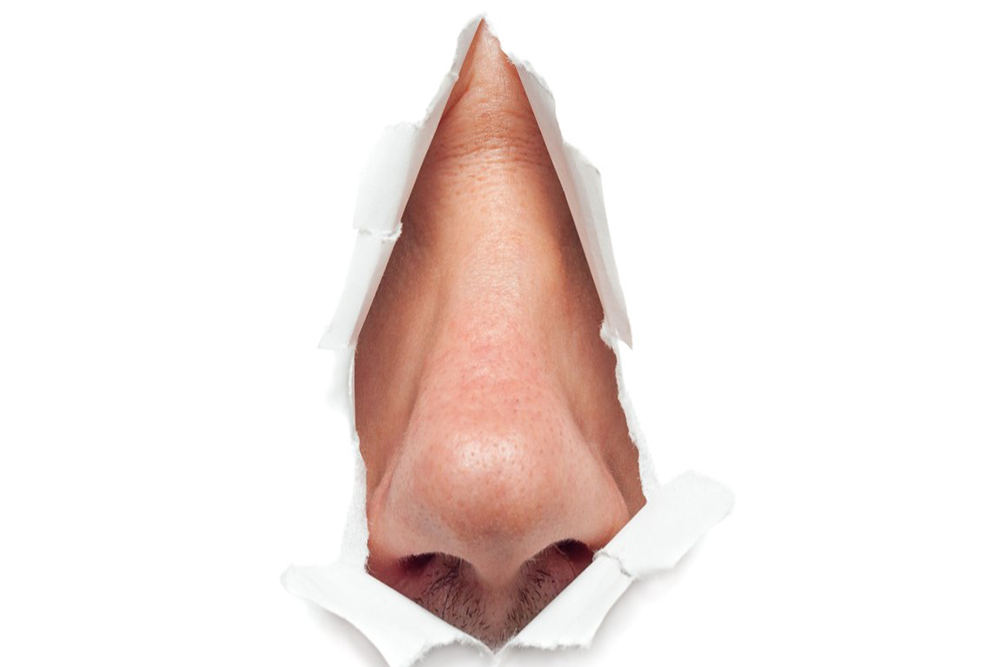Article At A Glance
- Preventing Rhinophyma relies on early-stage recognition.
- Rhinophyma treatment and surgery options include Rosacea Medications and CO2 Laser Resurfacing.
A big, bulbous, bumpy, or red nose indicates the skin condition known as rhinophyma. It is a form of rosacea. This guide will give you a thorough overview of this condition and insight into the treatment and surgery options available.
What Is Rhinophyma?
Rhinophyma is a benign condition that impacts the skin on your nose. It results in the enlargement of the nose and abnormal growth. It can be highly disfiguring, making the nose look bumpy and reddened. However, rhinophyma is not cancerous. Several factors influence this condition, but most medical experts agree it is an advanced-stage rosacea that happens in a minority of patients. This skin disorder tends to impact men more commonly than women.
Rhinophyma can cause several symptoms, such as increased sebaceous glands in the nose, inflammation, chronic swelling, and dilated blood vessels. These symptoms make the nose appear bulbous, thickened, and reddened. Additionally, there might be irregular skin pitting, scarring, and noticeable blood vessels. Caffeine and alcohol can make this condition worse.
Not only can rhinophyma be disfiguring, but the considerable enlargement of the nose can become so severe that it creates a nasal obstruction or worsens any obstruction. This is highly problematic because it makes breathing out of the nose difficult. Due to the diffusely abnormal appearance of the skin, individuals with rhinophyma may also have skin malignancies that may be difficult to diagnose.
Causes of Rhinophyma and Its Risk Factors
Enlarged oil glands in the soft tissue of the nose cause rhinophyma, a skin condition that can alter the shape of the nose. Several risk factors, including chronic exposure to sunlight, heavy drinking, pre-existing acne rosacea, and family history, can lead to the development of rhinophyma. Treatment of this condition includes topical medications, laser therapy, or surgically removing it from the skin. Removal of rhinophyma is an effective way to reduce its effect on appearance. However, if one of these risk factors is present, it will not prevent any new growth. It is essential to address any family history with primary care physicians to determine how best an individual can protect themselves.
Does Alcohol Abuse Cause Rhinophyma?
Rhinophyma is often referred to as a drinker’s nose or alcohol nose, which causes many people to assume that this disorder is caused by alcohol abuse. It’s an unfortunate coincidence that excessive alcohol consumption can cause vessels in the neck and the face to become swollen, which creates the appearance of flushed skin or redness. Similar symptoms displayed by patients with rhinophyma caused a common misconception that alcoholism was the cause of the condition.
Alcohol abuse as the cause of rhinophyma was disproved in a study by the University of South Florida Morsani College of Medicine published in 2015. This study diagnosed many patients with rhinophyma based on clinical examination. Still, none of them had alcohol abuse issues or regularly drank, and the study disproved the theory that alcoholism is the sole cause of rhinophyma.
The root cause of rhinophyma has yet to be determined. There has been some evidence to suggest that genetic predisposition and ethnicity can have an impact. This skin disorder tends to run in families of Eastern European, Scandinavian, Scottish, or English descent. However, this is about as far as we have gotten when it comes to getting to the bottom of what causes rhinophyma.
Does Rhinophyma Have Any Side Effects?
While rhinophyma is not harmful or life-threatening, it can have specific side effects. The most common side effects include physical discomfort, such as itching, burning, and tenderness of the affected area. In severe cases, rhinophyma can also cause difficulties with breathing or vision. Additionally, the appearance of rhinophyma may cause psychological distress and affect one’s self-esteem and quality of life.
Diagnosis Of Rhinophyma
The characteristic skin deformities and changes in the nose will typically be enough for a clinical diagnosis of rhinophyma. However, in some cases, a biopsy can be performed when the clinical picture is unclear. There are two options when it comes to rhinophyma.
In the early stages of rhinophyma, there will be evidence of rosacea and prominent enlargement of the sebaceous glands. Sebaceous glands are the small oil-producing glands in your skin, usually attached to hair follicles. There will be the presence of dilated sebaceous ducts that are filled with sebum. Plus, solid, pink, and red lesions can appear on the face, neck, or back.
Regarding the more severe types of rhinophyma, there can be diffuse spider veins and dermal (skin) thickness.
The Stigma Associated With Rosacea
Although the study proved that alcoholism is not the cause of rhinophyma, patients with rosacea still face a certain stigma due to the term “alcohol nose. Many patients with rosacea have reported experiencing anxiety and depression because of their disease. Rosacea has a similar impact on quality of life as occupational contact dermatitis, vitiligo, and leg ulcers, as described by research.
Patients with rhinophyma and other types of rosacea often report what could be signs of body dysmorphic disorder. This term describes a psychiatric condition whereby the individual is preoccupied with a defect in their physical appearance. Many patients with severe forms of acne are diagnosed with body dysmorphic disorder. The symptoms associated with BDD can significantly disrupt someone’s daily function and overall well-being. Although body dysmorphic disorder has not been clinically linked to patients with rosacea, there are a lot of similarities between rosacea symptoms and the symptoms of acne vulgaris.
Patients with rosacea can also be impacted by social and emotional stigmas, including being viewed as having poor hygiene or being an abuser of alcohol. A survey carried out by Kelton Research focused on the self-perception of patients with rosacea and the perceptions that others have toward those who suffer from different forms of rosacea. This survey contrasted images of females with rosacea and those without. There were over 1,000 people who participated in this survey. It concluded that women with rosacea were considered not as successful as those with clear skin, not as intelligent, not as healthy, and more insecure. Overall, there was a much more negative impression of women with rosacea.
Rhinophyma Prevention Methods
Preventing Rhinophyma largely depends on recognizing its earlier stages. It means understanding the skin and nasal architecture layers associated with this condition. Most notably, those with variants of rosacea can actively check their nose for any bumpy or hardening layers, many of which indicate a rising risk of Rhinophyma. Beyond that, religious use of sunscreen on sun-exposed skin is considered beneficial given the propensity of UV rays to worsen some instances in more advanced stages. Ultimately, advocacy and active prevention can go a long way toward preventing the onset and spread of Rhinophyma.
Treatments For Rhinophyma
Various forms of treatment are available depending on the severity of a patient’s rhinophyma symptoms.
Medications To Treat Rosacea
The first line of effective treatment is medication. A dermatologist typically prescribes oral and topical antibiotics to treat the rosacea that causes rhinophyma. Antibiotics may lower inflammation or reduce redness in the area. Medication generally is more effective when the condition is in the early stages, meaning the symptoms are not very severe. Erythromycin, metronidazole, and tetracycline are the most commonly used antibiotics for nose disorders. Other topical medications, like cyclosporine and azelaic acid, may help lower redness and inflammation. As there is no cure for rosacea, these medications help reduce redness and other discoloration but may not stop the advancement of rhinophyma.
Laser and Rhinophyma Surgery
Cases of fully developed rhinophyma may not improve with oral and topical antibiotics. Patients with severe rhinophyma can improve their condition with surgical treatment instead. Rhinophyma surgery is often considered the best option to treat on a long-term basis. While the blood vessels and the tissues continue growing, performing surgery as quickly as possible is critical to prevent permanent disfigurement. There are many different surgical options when it comes to treatment for rhinophyma. This includes the following:
- Carbon Dioxide Laser Resurfacing: The heat of a laser is used to reduce abnormal tissue.Dermabrasion: This gets rid of the excess skin layers. Often the best choice for a smoother contour without heat or possible burn injury.Cryosurgery: This destroys and freezes abnormal or unwanted tissues. Sharp Excision is when excess tissue or growth is cut away using a scalpel.
Each treatment method has pros and cons that should be discussed with a specialist. These surgeries are outpatient procedures that are usually performed under sedation. As with all surgeries, there are risks associated with the surgical options. That’s why choosing a doctor with care is important so that you understand your choices. Ask your doctor how many they perform and ask to see before and after photos of their results. Although there is no known treatment for rhinophyma, surgical procedures can significantly boost the patient’s self-esteem and the physical appearance of the nose. Of course, there will be a recovery period after a surgical procedure.
The type of surgery you choose will often be dictated by the results you are hoping to achieve. For example, enhance the overall look of your skin, lower the appearance of the superficial and tiny blood vessels in the area, reshape a disfigured nose, or remove excess skin lawyers or growth. This will all be considered when determining the best treatment option for you.
Conclusion
While rhinophyma is a skin disorder that is typically benign, it’s necessary to secure a proper diagnosis because there is still a risk that the growth could be malignant. Seeking treatment as early as possible is the best way to avoid permanent physical deformity and emotional distress. If you are currently experiencing symptoms of rhinophyma or suspect that you may have the condition, contact a surgeon as soon as possible.



